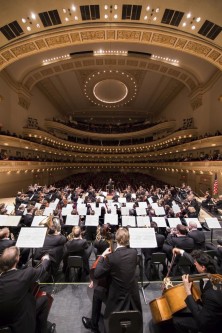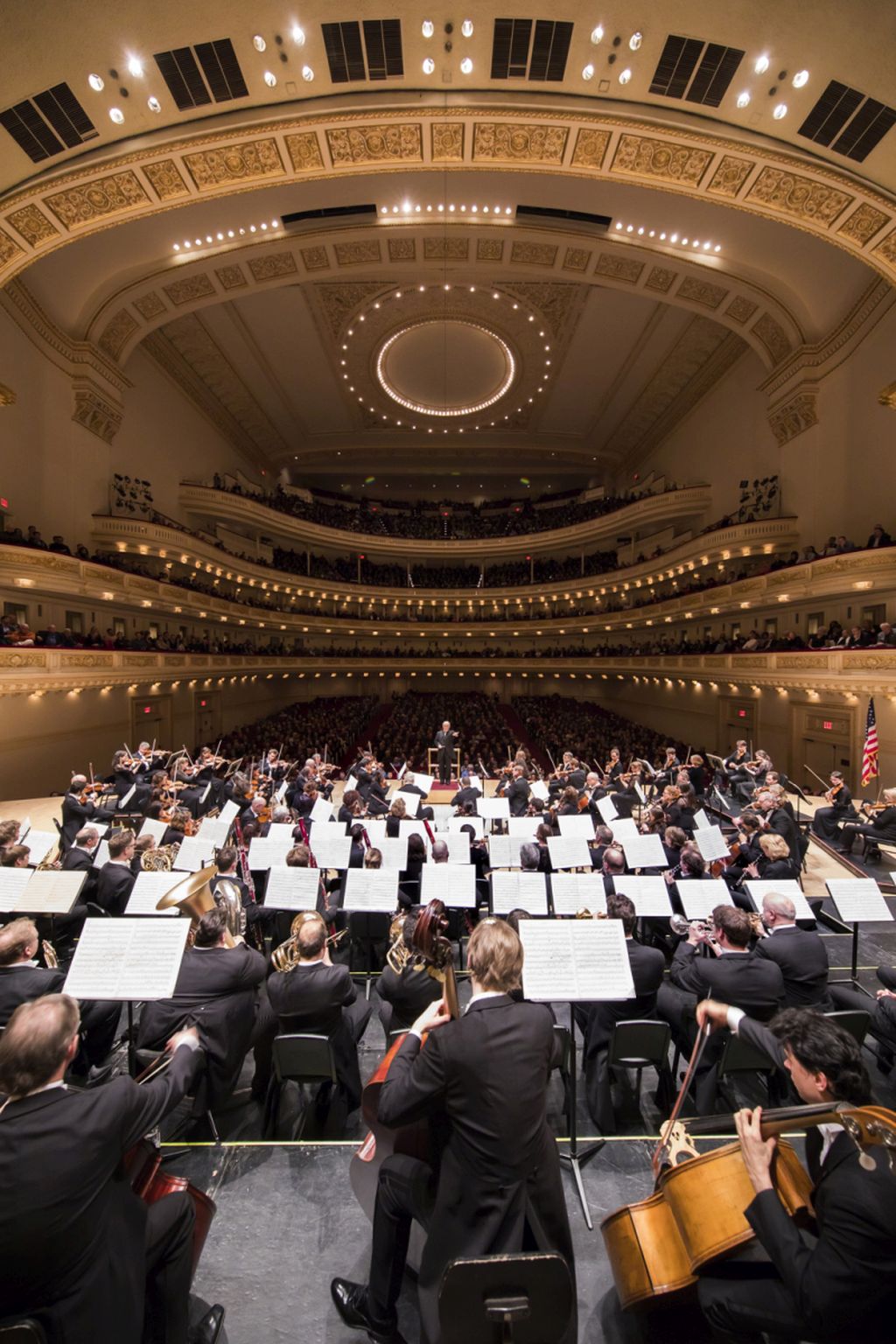 United States Mozart, Bruckner: Staatskapelle Berlin, Daniel Barenboim (piano/conductor), Carnegie Hall, New York City. 23 & 24.1.2017. (BH)
United States Mozart, Bruckner: Staatskapelle Berlin, Daniel Barenboim (piano/conductor), Carnegie Hall, New York City. 23 & 24.1.2017. (BH)
23 January
Mozart – Piano Concerto No.26 in D Major, K.537, “Coronation” (1788)
Bruckner – Symphony No.4 in E-flat Major, “Romantic” (1878-1880) (1874; rev. 1878-1880)
24 January
Mozart – Sinfonia concertante in E-Flat Major for Oboe, Clarinet, Bassoon, Horn, and Orchestra, K.297b (1778)
Bruckner – Symphony No.5 in B-Flat Major (original version, 1875-1876)
If you like octaves and fifths (the musical kind, not the whiskey kind), not to mention the key of E-flat Major, then Bruckner’s Fourth Symphony is for you—at least, as played by Daniel Barenboim and the Staatskapelle Berlin at Carnegie Hall. In the fourth concert of their complete Bruckner cycle—and showing no signs of fatigue—Barenboim and the orchestra offered a glowing account of the symphony subtitled “Romantic,” which among many delights, reconfirmed the glories of the ensemble’s horn section.

But before that came Mozart’s Piano Concerto No.26, with the conductor again at the keyboard. After the ensemble’s broadly muscular introduction, Barenboim some lovely tone, and in the first-movement cadenza, a patriotic-sounding anthem of a march. The dreamlike second movement was followed by the Allegretto launched at extremely high speed. Oddly, despite some blurring and imprecision in the first two movements, Barenboim’s pianism seemed to thrive and become more deliciously ticklish.
In the Fourth, Bruckner is starting to refine his style—still somewhat craggy in the Third—and his proto-Minimalist leanings are beginning to manifest themselves. Traditional classical style urges that a passage should only be repeated twice; Bruckner blows that theory to smithereens, though not with the repetitive valor of the verified Minimalists a century later.
Tuning is crucial to make those octaves and fifths ring true, and the ensemble showed exacting attention, especially in hushed passages with the rock-steady winds and brass sustaining a single chord. But the strings—some of whom must have emerged afterward with mild carpal-tunnel syndrome from all the tremolos—continued the sheen of the previous three concerts, lavishing their expertise on line after flowing line.
Lunging fanfares in the Scherzo were taken at a galloping pace, with a few minor instrumental bobbles, and when the trio arrived, it seemed far away from the rugged terrain surrounding it—as if watching a tiny island oasis from a helicopter, flying above.
And then came the finale, leading first to a gigantic unison that flattened everything in its path. Bits of the flow movement returned, later smashed by boulders of brass, tumbling down, along the winding road to the triumphant conclusion. For horn enthusiasts, this must have been heaven.
But on the following night, the ensemble’s reading of the Fifth at the cycle’s halfway point, might go down as the best concert of the nine, so far. First, instead of one of the piano concertos, the Mozart offering was the Sinfonia concertante in E-Flat Major for Oboe, Clarinet, Bassoon, Horn, and Orchestra, K.297b. As soloists, the four principals in the orchestra’s laudable wind section were given a big spotlight, and they deserved it. With light, exacting attention to dynamics, phrasing, and intonation, the quartet was matched by a carefully modulated orchestra. In the final theme and variations, each of the four had many delicious moments.
If you like being stomped on by a Brontosaurus—and who doesn’t?—the Fifth is for you. Bruckner naysayers who use words like “bombastic,” “ponderous,” and “elephantine” may have lots of ammunition in this massive opus, which runs about an hour and 15 minutes. (And in their first appearance together, the two Staatskapelle timpanists, Dominic Oelze and Torsten Schönfeld, were placed on either side of the stage, adding extra weight.) On the other hand, for those who don’t mind a bit of excess, this work might be one of the Top Ten Brass Works of All Time.
After another whisper-quiet introduction with the double basses, Barenboim closed the phrase and stood, cocoon-like, before unleashing the gale-force first blast. What followed were dynamic levels ranging from the strings’ light cat feet, to gigantic pillars anchored by the horns, trumpets, trombones, and tubas. The orchestra’s tone never turned harsh. In contrast to some Bruckner interpreters who see the composer as highly polished clouds of sound (Karajan), others see more sinew and athleticism (Abbado). The latter yields more complex and interesting results (and might make the composer more welcome to those who use the adjectives in the previous paragraph).
Throughout the Fifth, and all of the five concerts to date, Barenboim has been extraordinarily patient in the symphonies’ intimate moments, eliciting true pianissimos, and making the most of some of the composer’s stark contrasts. This symphony’s second movement—full of gliding motion as if through vast caverns—was masterfully paced. Now and then the conductor would lean back against the podium, leaving the group to handle the slow tread on its own.
In contrast, the sweep and swing of the Scherzo is like a giant pendulum, with heroic onslaughts of lusciously dense melodic cells. At the end, in a slightly amusing moment repeated several times so far, the principal second violin handed Barenboim a glass of water, sitting on the floor.
In the finale, as Bruckner begins assembling forces for the long road ahead, the muscular fugue arrives. Here the brass chorales had weight, but also detail, so the differences in individual instruments could be discerned. Barenboim’s rounded phrasing found light and shade in even the tiniest corners, all the way through to the resplendent, triumphant conclusion. For many, this will be the cycle’s apex so far.
Bruce Hodges
